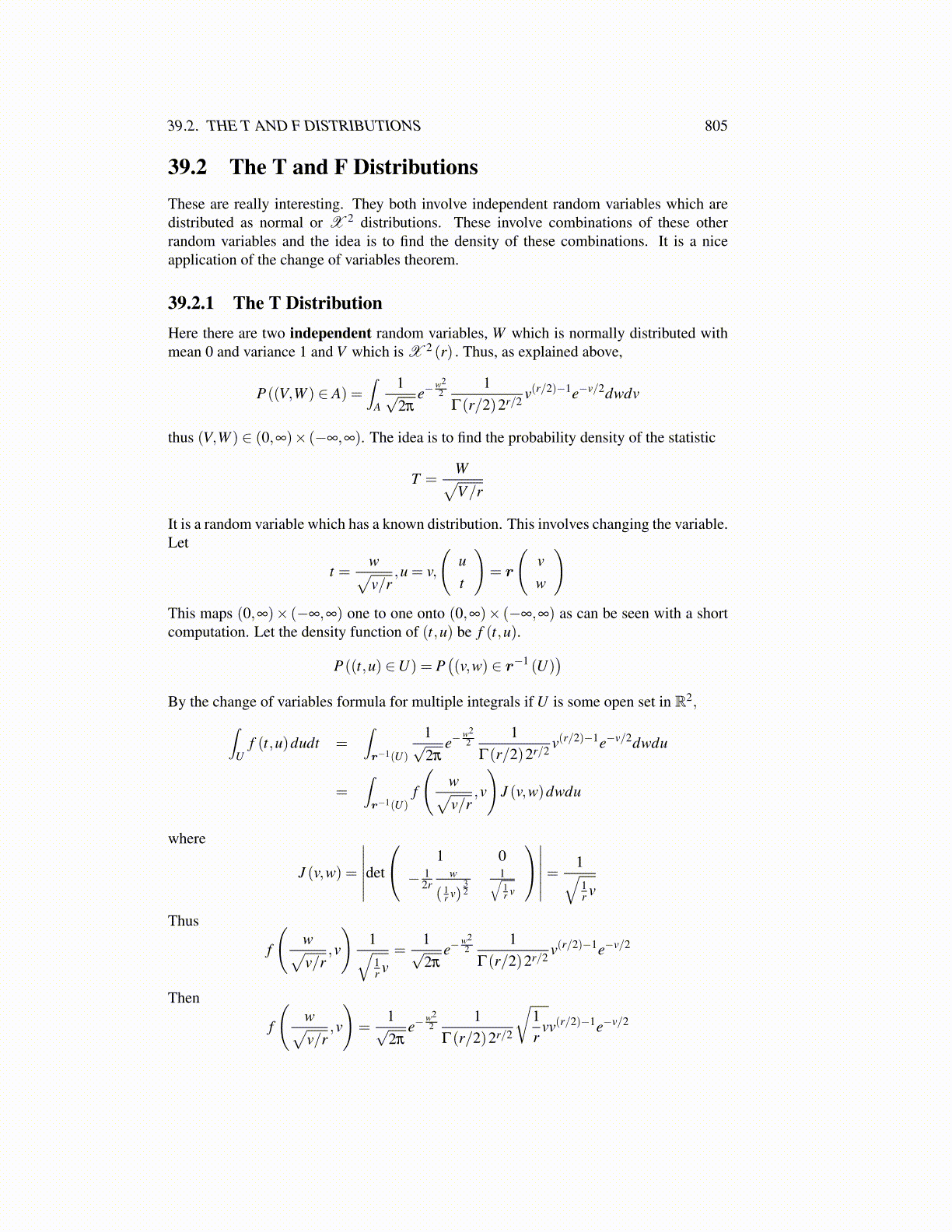
39.2. THE T AND F DISTRIBUTIONS 805
39.2 The T and F DistributionsThese are really interesting. They both involve independent random variables which aredistributed as normal or X 2 distributions. These involve combinations of these otherrandom variables and the idea is to find the density of these combinations. It is a niceapplication of the change of variables theorem.
39.2.1 The T DistributionHere there are two independent random variables, W which is normally distributed withmean 0 and variance 1 and V which is X 2 (r) . Thus, as explained above,
P((V,W ) ∈ A) =∫
A
1√2π
e−w22
1Γ(r/2)2r/2 v(r/2)−1e−v/2dwdv
thus (V,W ) ∈ (0,∞)× (−∞,∞). The idea is to find the probability density of the statistic
T =W√V/r
It is a random variable which has a known distribution. This involves changing the variable.Let
t =w√v/r
,u = v,
(ut
)= r
(vw
)This maps (0,∞)× (−∞,∞) one to one onto (0,∞)× (−∞,∞) as can be seen with a shortcomputation. Let the density function of (t,u) be f (t,u).
P((t,u) ∈U) = P((v,w) ∈ r−1 (U)
)By the change of variables formula for multiple integrals if U is some open set in R2,∫
Uf (t,u)dudt =
∫r−1(U)
1√2π
e−w22
1Γ(r/2)2r/2 v(r/2)−1e−v/2dwdu
=∫r−1(U)
f
(w√v/r
,v
)J (v,w)dwdu
where
J (v,w) =
∣∣∣∣∣∣det
1 0− 1
2rw
( 1r v)
32
1√1r v
∣∣∣∣∣∣= 1√1r v
Thus
f
(w√v/r
,v
)1√1r v
=1√2π
e−w22
1Γ(r/2)2r/2 v(r/2)−1e−v/2
Then
f
(w√v/r
,v
)=
1√2π
e−w22
1Γ(r/2)2r/2
√1r
vv(r/2)−1e−v/2